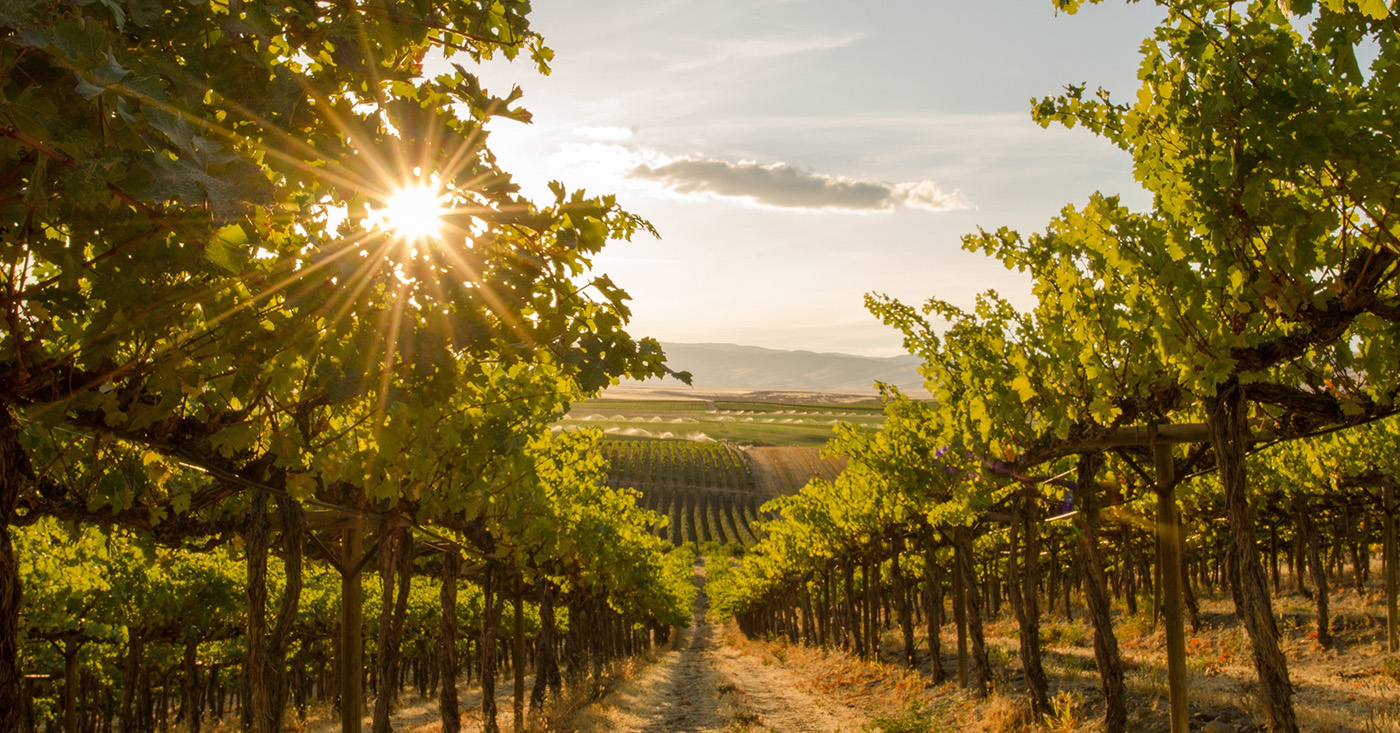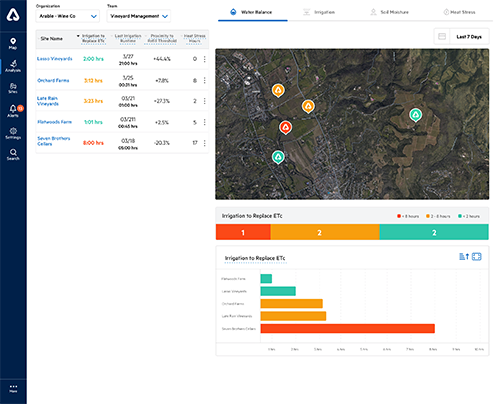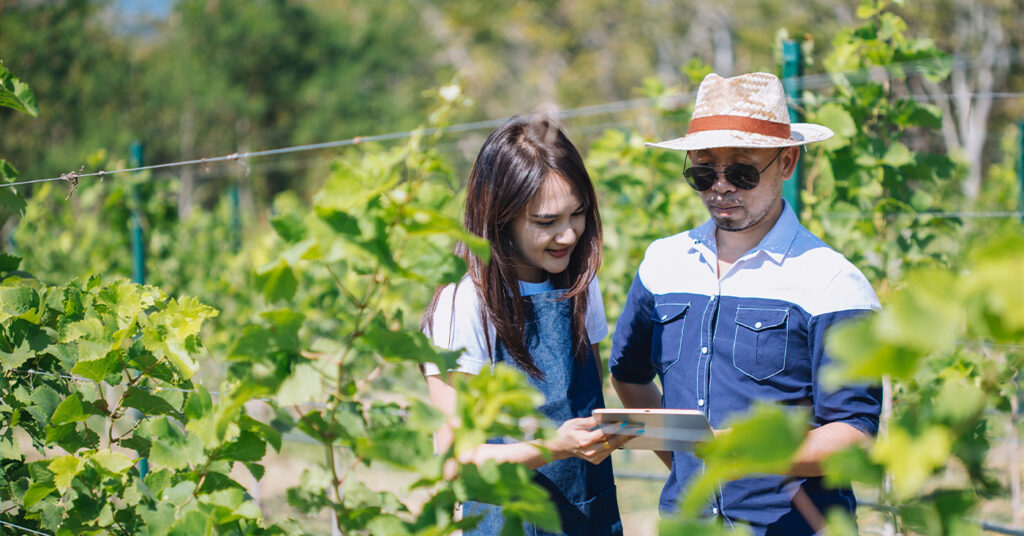Embracing Innovation: Advancing Sustainable Winegrowing with Agricultural Technology
California winegrowers have long been pioneers in the art of winemaking. Today, many are blending tradition with cutting-edge technology to cultivate grapes more sustainably than ever before. By embracing innovation, forward-thinking winegrowers are not only enhancing the quality of their grapes and wines, they are securing the long-term viability of their vineyards and reducing their environmental impact. In this blog post, we explore three types of agricultural technology that are being put to use to advance sustainable winegrowing throughout California.
In-Field Monitoring: Gain Deeper Insight. Drive Better Outcomes.
The emergence of advanced field monitoring systems has transformed vineyard management. Outdated weather stations, with their complex wiring, separate data loggers, and ongoing maintenance requirements, are now a thing of the past. In their place, modern in-field monitoring systems boast wireless technology, pre-integrated sensor suites, and user-friendly deployment. Taking user convenience even further, systems like the Arable Mark integrate data communications directly into the sensing device, eliminating the need for a separate data logger. Technological advancements have also reduced the need for hardware upkeep. For example, the implementation of acoustic technology, as seen on the Arable Mark, enables precise measurement of precipitation without the burden of having to clean a rain gauge.
These advanced systems offer more than just hyper-local weather data. They also provide a comprehensive suite of sensed data for plants, soil, and irrigation. A full spectrum of information, such as evapotranspiration, chlorophyll levels, leaf wetness, soil moisture, and irrigation run times can be collected by a single device and automatically transmitted to the cloud. And in some cases, like with the Arable Mark 3, the in-field device can also include a camera to capture crop images in the context of field conditions.
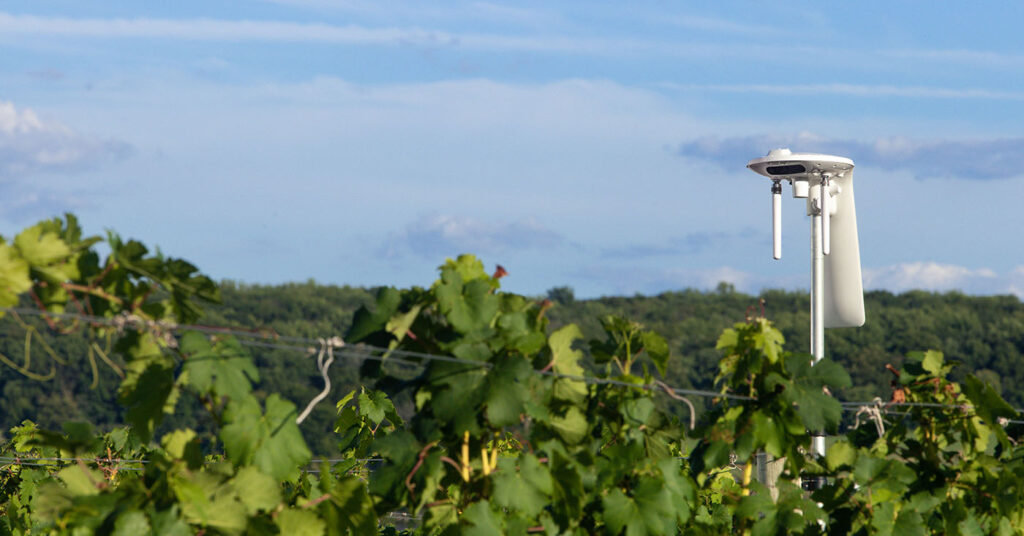
One of the standout advantages of these integrated in-field monitoring systems is immediate access to real-time, actionable vineyard data. Viticulturists as well as vineyard managers can leverage these insights to anticipate and mitigate disease outbreaks, optimize pest management strategies, reduce water usage, monitor for heat and water stress, and determine the ideal harvest timing using growing degree days. By adopting a proactive approach based on holistic field intelligence, winegrowers are empowered to reduce their reliance on chemical inputs, optimize resource allocation, and minimize the risk of crop damage, all while maximizing grape quality and yields.
Precision Irrigation: Ensure Every Drop Counts.
Water scarcity poses a significant cyclical challenge for the whole of California’s agricultural sector. Although the rain and snowpack of winter 2023 may have temporarily alleviated immediate scarcity concerns, the looming threat of climate change and unpredictable weather patterns continue to necessitate vigilant water management.
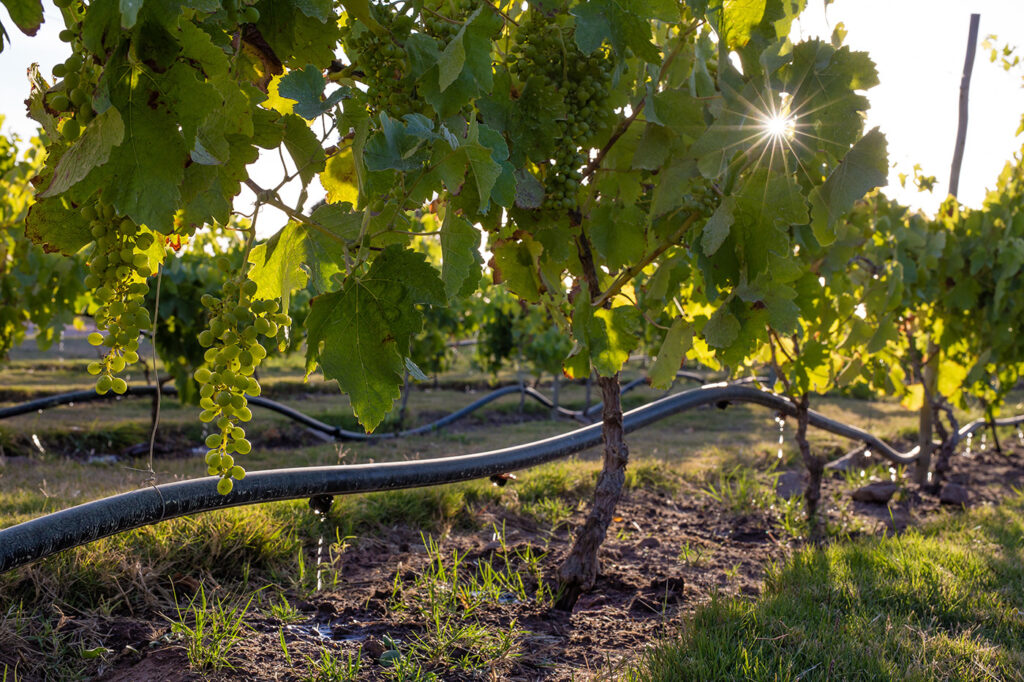
Precision irrigation technologies, such as in-field evapotranspiration measurement tools, soil moisture sensors, as well as irrigation monitors and scheduling systems, all play a pivotal role in optimizing water usage in vineyards. These technologies enable growers to better understand crop water demands, closely track applied irrigation, manage deficit irrigation strategies, and proactively address vine stress before it negatively impacts quality or yields. The insights provided by these contemporary solutions facilitate informed irrigation decisions, ensuring every drop of water counts towards meeting quality and stewardship goals.
Aerial and Satellite Imagery: Spot Trends with a Bird’s Eye View.
Aerial and satellite imagery have also emerged as valuable tools for monitoring large vineyards and gathering essential data for sustainable wine grape growing.
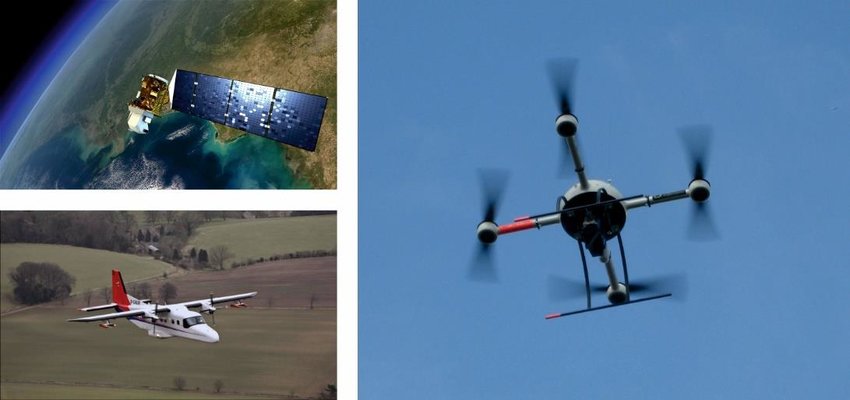
Drones, also known as unmanned aerial vehicles (UAVs), can be utilized for a range of use cases, including managing canopy density, capturing NDVI images for identifying vigor and stress variations, creating maps and 3D models, as well as detecting pests and diseases. The advantage of drones lies in their ability to provide precise and targeted observations, but the logistics and costs associated with acquiring aerial imagery tend to limit their use to a few times per season. Compliance with regulations and the need for specialized expertise for image analysis are also important considerations.
Satellites, on the other hand, offer a broader perspective by monitoring large land masses consistently throughout the season. Applications include vineyard planning and site selection, as well as crop monitoring. Satellites collect data on a regular basis which can be helpful in analyzing vineyard performance over time. Satellites produce lower-resolution imagery than drone imagery, but they compensate with the ability to monitor a larger area of land on a more consistent basis. Limitations such as revisiting frequency as well as cloud cover and atmospheric conditions can, however, affect the value and usefulness of satellite imagery.
Innovative Agricultural Technology Turns Sustainable Winegrowing into Reality
The future of winegrowing has arrived. The adoption of agricultural technology is transforming sustainable winegrowing from an aspirational goal into a practical reality.
Advanced in-field monitoring systems are providing real-time, actionable data on weather, plant health, soil conditions, and irrigation, and are enabling more informed decision-making and improved efficiencies throughout vineyard operations. Precision irrigation technologies are fueling a deeper understanding of crop water demand and applied irrigation resulting in new opportunities to optimize irrigation practices. Moreover, the use of drones and satellite imagery are facilitating better long-range planning with broader visibility into vineyard-level variables such as vine health, soil composition, and water availability. That said, it’s important to note that agricultural technology is not a one-size-fits-all solution, and careful consideration should be given to selecting the technologies that align best with business goals.
Long-term sustainability ultimately involves balancing vineyard productivity with financial success and environmental stewardship. That delicate balance stems from combining human know-how and traditional practices with innovative data-driven solutions. California winegrowers—large and small—are increasingly embracing this formula for success and paving the way to a prosperous, environmentally conscious future for the industry.
